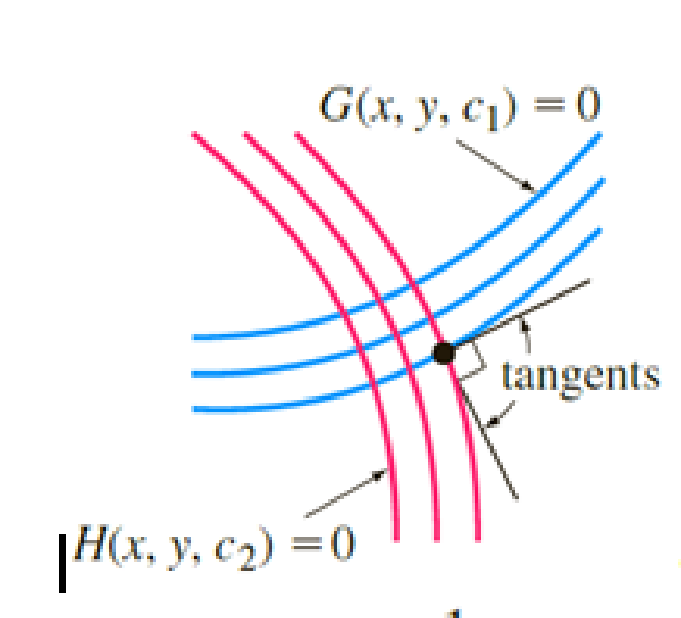
Concept explainers
When all the curves in a family G(x, y, c1) = 0 intersect orthogonally all the curves in another family H(x, y, c2) = 0, the families are said to be orthogonal trajectories of each other. See Figure 3.R.5. If dy/dx = f(x, y) is the differential equation of one family, then the differential equation for the orthogonal trajectories of this family is dy/dx = −1/f(x, y). In Problems 15-18 find the differential equation of the given family by computing dy/dx and eliminating c1 from this equation. Then find the orthogonal trajectories of the family. Use a graphing utility to graph both families on the same set of coordinate axes.

16. x2 − 2y2 = c1
Want to see the full answer?
Check out a sample textbook solution
Chapter 3 Solutions
Student Solutions Manual For Zill's A First Course In Differential Equations With Modeling Applications, 11th
- pls helparrow_forwardUse the formulas developed in this section to find the area of the figure. A= (Simplify your answer.) 8.5 m 7 T 13 m 7.7 m m 21 marrow_forwardFind the circumference and area of the circle. Express answers in terms of and then round to the nearest tenth. Find the circumference in terms of C = (Type an exact answer in terms of л.) 9 cmarrow_forward
- Find the area of the figure. A = 4 m 11 m 13 m 5 marrow_forwardFind the exact values of sin(2u), cos(2u), and tan(2u) given 2 COS u where д < u < π. 2arrow_forward(1) Let R be a field of real numbers and X=R³, X is a vector space over R, let M={(a,b,c)/ a,b,cE R,a+b=3-c}, show that whether M is a hyperplane of X or not (not by definition). متکاری Xn-XKE 11Xn- Xmit (2) Show that every converge sequence in a normed space is Cauchy sequence but the converse need not to be true. EK 2x7 (3) Write the definition of continuous map between two normed spaces and write with prove the equivalent statement to definition. (4) Let be a subset of a normed space X over a field F, show that A is bounded set iff for any sequence in A and any sequence in F converge to zero the sequence converge to zero in F. އarrow_forward
 Linear Algebra: A Modern IntroductionAlgebraISBN:9781285463247Author:David PoolePublisher:Cengage Learning
Linear Algebra: A Modern IntroductionAlgebraISBN:9781285463247Author:David PoolePublisher:Cengage Learning
